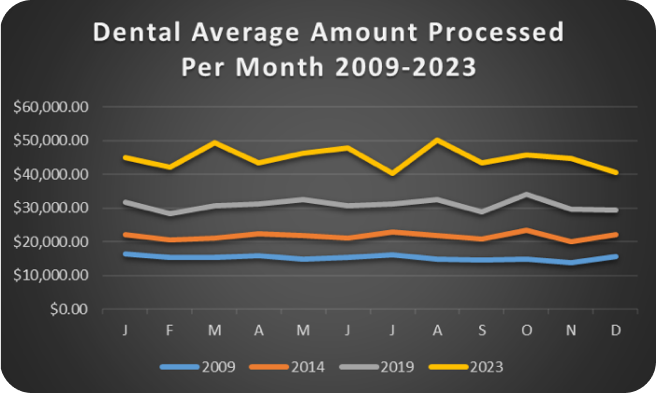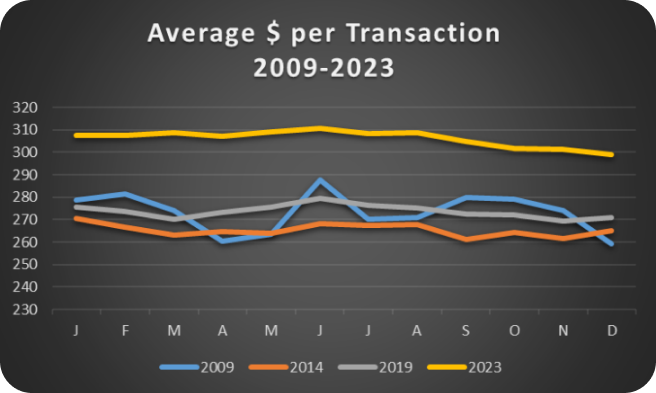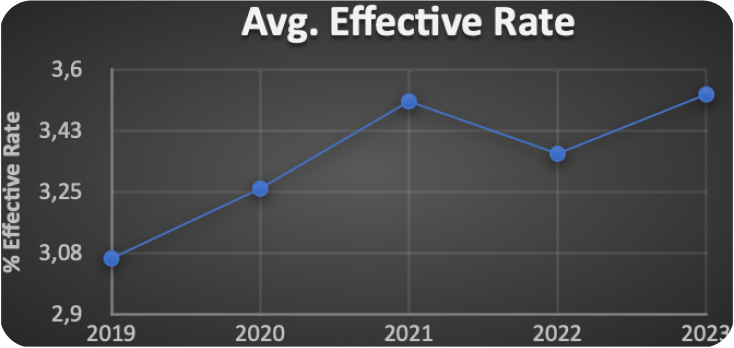Dentistry can be an isolated profession and it’s often difficult to know how your practice compares to your peers. While no two practices are identical, how would you know if the trends in your office are being seen by other dental practices? There are some questions that can be embarrassing to ask another practitioner about: practice volume, profitability, etc. The landscape of the payments your practice accepts has probably changed drastically in the last few years but those changes often can slip under the radar even when it is significantly affecting your bottom line.
Best Card, the endorsed payment processor of the TDA Perks and ADA Member Advantage has been working with thousands of dental offices nationwide for over 15 years, and we want to pull back the curtain on the uncomfortable questions you may not want to ask your fellow practitioners:
Best Card, the endorsed payment processor of the TDA Perks and ADA Member Advantage has been working with thousands of dental offices nationwide for over 15 years, and we want to pull back the curtain on the uncomfortable questions you may not want to ask your fellow practitioners:
- How much does the average dental office collect in credit card payments?
- Have dentists raised their prices to keep up with inflation?
- What are other dentists paying to accept credit card payments?
- How much SHOULD you be paying?

How much does the average dental office collect in credit cards?
Dental offices have seen a large increase in the total amount of credit card payments collected over the past 10+ years and Covid accelerated that trend considerably, as patients moved towards payment methods that were more convenient and involved less physical contact. Furthermore, many insurance providers started issuing virtual credit cards as payment for their remittances, which also increased the amount of card payments dental practices are accepting.

- In 2023, the average dental office ran $44,925 in credit card payments per month.
- That’s a 45.5% increase over the 2019 average of $30,876.
- It’s a 195% increase over the 2009 average of $15,221. The average practice is now running almost 3 times as much in credit cards as in 2009!
While accepting credit cards ensures that offices can quickly and easily collect payments, with more patients and insurance providers choosing to pay with cards, it is a much more substantial factor in the practice’s total profitability than in the past.
Have practices raised their costs to keep up with inflation?
Every dentist knows that Covid and the resulting supply chain and inflation issues increased the costs of many items used regularly in the practice. As a result, many dentists have had to raise their prices over the last several years in response to those increased business costs. We can see this trend clearly by looking at the size of the average payment across all practices.
- The average credit card payment accepted by dental offices in 2023 was $306 compared to $273 in 2019 – an increase of 11.87% in just four years.
- From 2009 to 2019, the average payment only increased 0.12% over a 10 year period.
- 2023 saw a slight decrease in the average payment compared to 2022: from $307 to $306, indicating that increases due to inflation may be slowing.

The Consumer Price Index shows that inflation in the U.S. from 2019 to 2023 was 19.2%, so even though the increase in average dental transaction size from 2019 onward marked a substantial difference compared to 2009-2019, the 11.87% increase hasn’t kept up with the economy-wide price hike.
What does the average practice pay to run cards?
At the same time that the average dental office’s payment volume has increased, the costs incurred to run those payments has also increased, and often these fees can be hard to understand. What’s easy to discern, however, is the impact on the bottom line of the practice – to figure this out, you should calculate your effective rate with some simple math:
Total Fees Paid for the month ÷ Total Run in Card Sales during the month = Your Effective Rate
In 2023, the average dental office in the U.S. paid 3.53% compared to 3.06% in 2019. These rates are already too high, but to put it in perspective, back in 2014, the average dental office paid 2.84%.
So, the average practice is paying more as a percentage per payment while also accepting 45% more card payments than they did back before the pandemic. That makes a big difference.

Put in real numbers:
- The average office in 2019 ran $30,876 at a rate of 3.06% for a total of $944 per month in fees.
- The average office in 2023 ran $45k in card payments, and is now paying 3.45%, for a total of $1,585 per month in fees.
- For the average practice, that’s an increase of $7,692 per year in costs over just 4 years.
While the average office paid more than 3.53% in 2023, Best Card’s average dental office on the exclusive rates offered to TDA Members paid 2.22% in 2023 for an average savings of $6,496 per year.
Summary:
Dental practice owners are busy and sometimes it is easy to overlook small increases in the costs of services you are using, but often those small increases are frequent enough to have a big impact. Any part of your business that increases substantially over time should be analyzed periodically to make sure that it’s meeting the needs of your bottom line.
If you see that you’re paying more to accept credit cards while also taking more payments, it might be time to look for a better option.
If you see that you’re paying more to accept credit cards while also taking more payments, it might be time to look for a better option.



